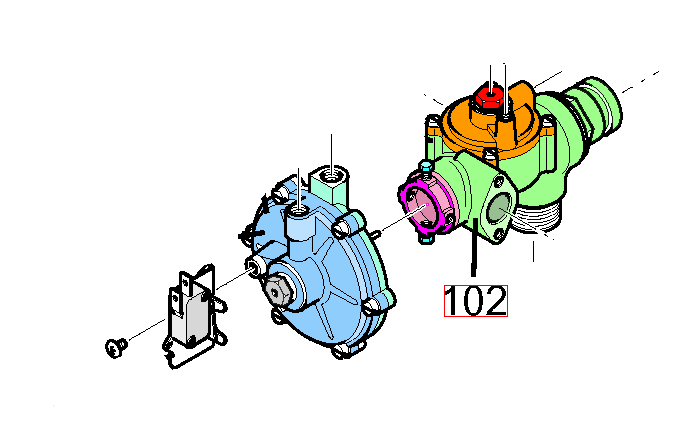Hi,
I'm hoping someone here can help me, I'm ALMOST at the end of my tether!
I'm having problems with my 4 year old Baxi 105e (it's NOT the "instant" version) - the central heating works just fine, but, as of Christmas day (well, it WOULD be, wouldn't it!?), I have had no hot water.
When a HW tap is turned on, the HW green LED lights up (as it should), the pump starts running, but the burner does not ignite. After about 20 seconds or so, the "fault on pump or low system pressure" LED (the 60 degree LED) starts flashing. (The flashing LED goes out once the HW tap is turned off.) It doesn't seem to matter if the system is in CH/HW mode, or HW only mode.
I have reset the boiler several times, using both the reset switch, and by turning off the electricity supply at the wall. Resetting does not make any difference - still no hot water!
So far (mainly from other advice re 105e combis found on this site), I've done the following:
- checked the diaphragm and push rod assembly in the DHW valve (the rod moves out when there is a demand for HW, and activates the microswitch, as it should do) - the diaphragm looks OK (no obvious damage), and the rod appears straight, undamaged and not seized.
- checked and cleaned the connections on the PCB.
When I hand operate the DHW valve microswitch (with no water flow), the green HW demand LED lights up, and the burner ignites as it should. When the microswitch is operated by the pushrod from the DHW valve, the HW demand LED lights, but the burner does not ignite (not even when the microswitch is "hand-assisted" while the water is flowing). Not sure if this signifies a problem with the DHW valve, the microswitch or the PCB (or something else?)
FYI, the boiler is professionally serviced once a year.
Am I looking at a PCB failure, a problem with the diverter valve assembly, or something else that I haven't even considered?
I'm no expert in this, just a fairly competent mechanical engineer with a dislike of excessive bills for problems I can probably fix myself (although I'm not averse to calling out the experts when I'm out of my depth!). Any helpful advice, or pointers in the right direction, would be gratefully received!
Thanks in advance,
Helen
I'm hoping someone here can help me, I'm ALMOST at the end of my tether!
I'm having problems with my 4 year old Baxi 105e (it's NOT the "instant" version) - the central heating works just fine, but, as of Christmas day (well, it WOULD be, wouldn't it!?), I have had no hot water.
When a HW tap is turned on, the HW green LED lights up (as it should), the pump starts running, but the burner does not ignite. After about 20 seconds or so, the "fault on pump or low system pressure" LED (the 60 degree LED) starts flashing. (The flashing LED goes out once the HW tap is turned off.) It doesn't seem to matter if the system is in CH/HW mode, or HW only mode.
I have reset the boiler several times, using both the reset switch, and by turning off the electricity supply at the wall. Resetting does not make any difference - still no hot water!
So far (mainly from other advice re 105e combis found on this site), I've done the following:
- checked the diaphragm and push rod assembly in the DHW valve (the rod moves out when there is a demand for HW, and activates the microswitch, as it should do) - the diaphragm looks OK (no obvious damage), and the rod appears straight, undamaged and not seized.
- checked and cleaned the connections on the PCB.
When I hand operate the DHW valve microswitch (with no water flow), the green HW demand LED lights up, and the burner ignites as it should. When the microswitch is operated by the pushrod from the DHW valve, the HW demand LED lights, but the burner does not ignite (not even when the microswitch is "hand-assisted" while the water is flowing). Not sure if this signifies a problem with the DHW valve, the microswitch or the PCB (or something else?)
FYI, the boiler is professionally serviced once a year.
Am I looking at a PCB failure, a problem with the diverter valve assembly, or something else that I haven't even considered?
I'm no expert in this, just a fairly competent mechanical engineer with a dislike of excessive bills for problems I can probably fix myself (although I'm not averse to calling out the experts when I'm out of my depth!). Any helpful advice, or pointers in the right direction, would be gratefully received!
Thanks in advance,
Helen


